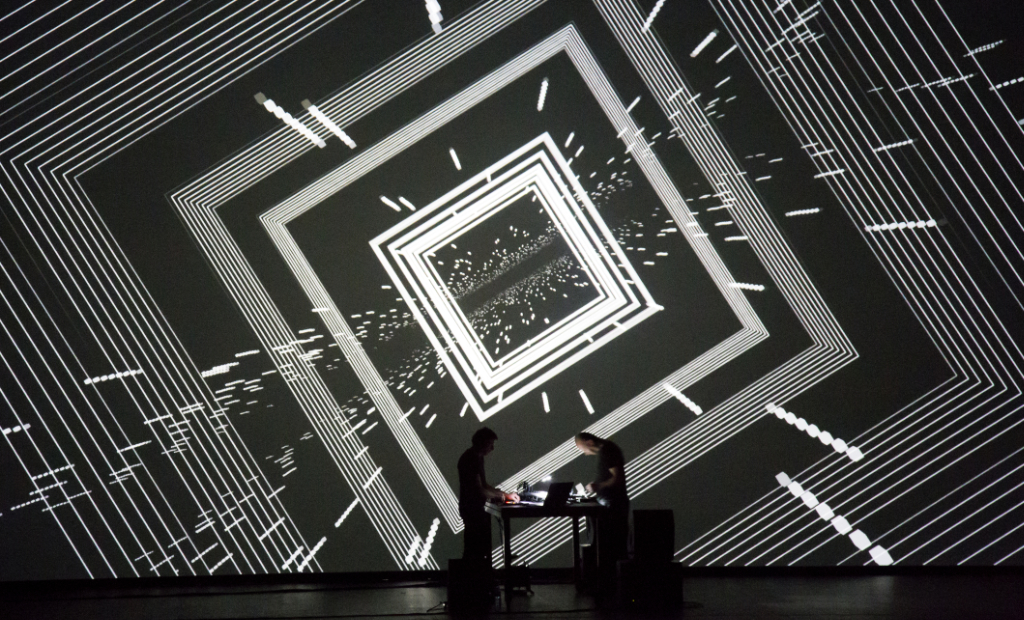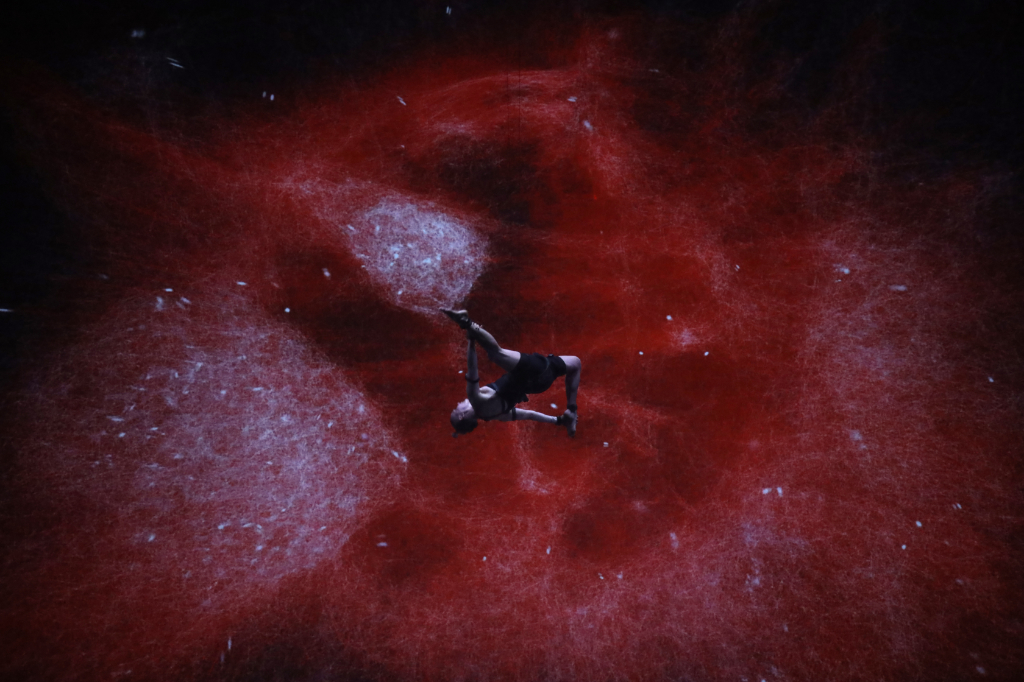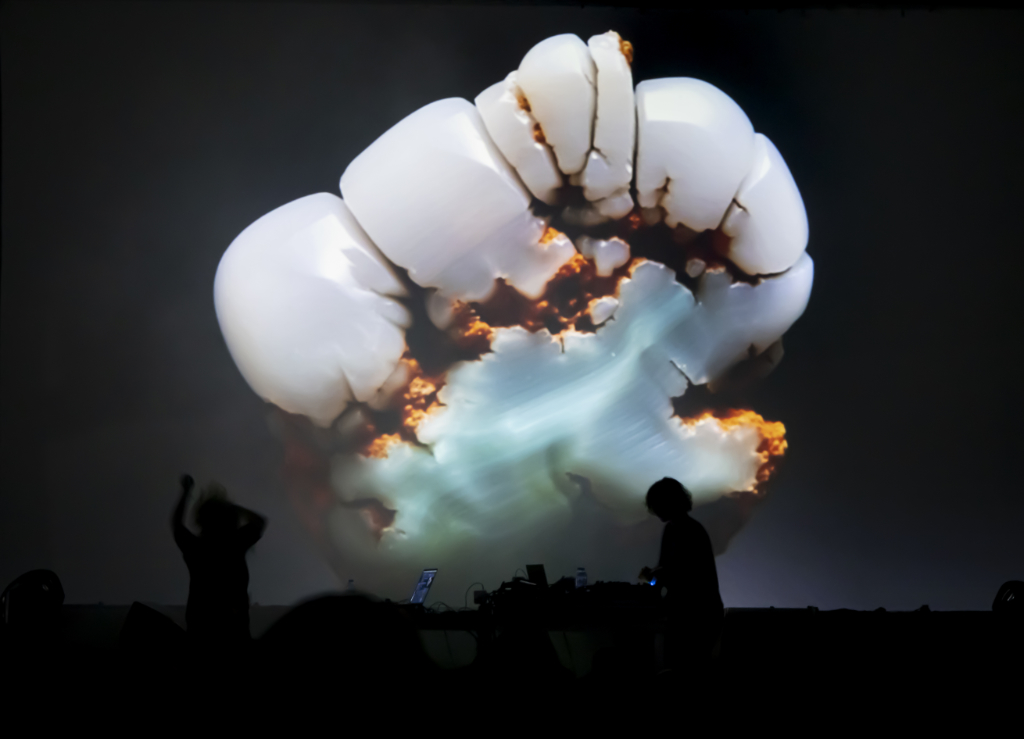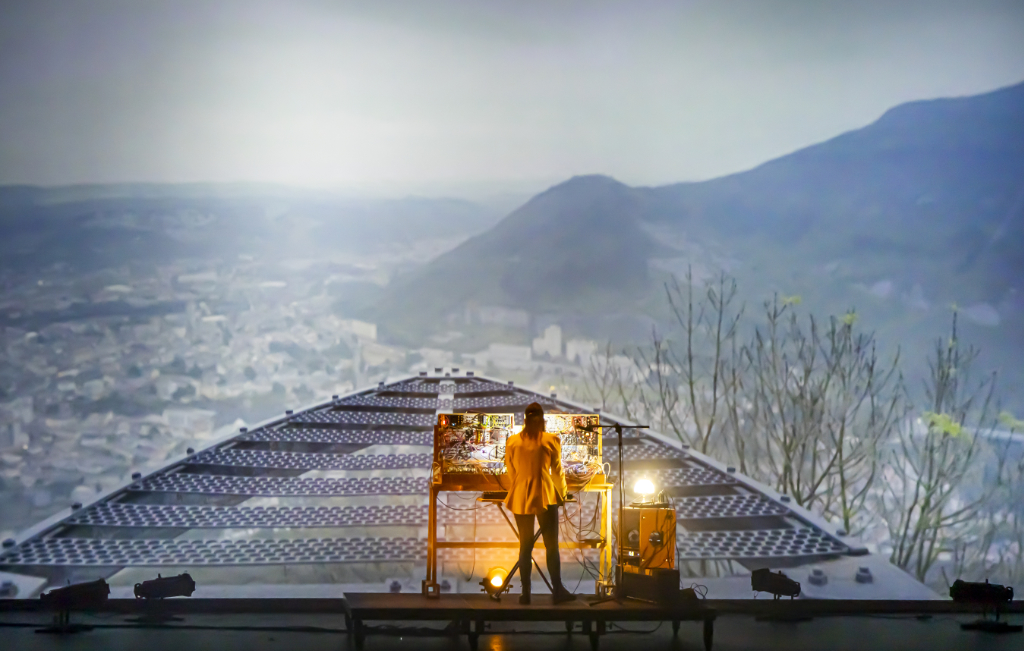Text by Jacobo García

On the last weekend of April, the L.E.V. festival celebrated its 17th edition, this fact may not look impressive these days when marketing speak is the norm, even in niche cultural environments, but if someone dedicates a couple of minutes to analyze the context where the festival has matured, it will find a different story. In the last three decades, L.E.V. was developed in a city with no backstory of experimental music and endured to become one of the most seasoned European festivals in the field. We travelled to Gijón to witness what the organisation had prepared so you can experience some of the things we saw and experienced penned in this text.
Friday at Teatro de La Laboral was our starting point with Aimée Portioli, also known as Grand River. The producer conjures atmospheric depth over shifting rhythmic structures; her show embarked us on a trip to the wilderness that embraces and inspires her. In an interview during the festival, Partioli shared that she put special attention to her new live show. She worked with her long-time collaborator Marco Ciceri on the lighting and stage design.
This time the musician wanted to express the album with a different visual influence by using light design. We wanted to create an immersive experience that enhances certain moments while leaving others where the visibility is reduced so the audience can focus on deep listening. The vibrance of the colours, the shape of the reflections, and the smoke distribution vary according to the size and architecture of the venue, so for them was fascinating and surprising to experience how each performance becoming somewhat site-specific.
Later on, French composer Franck Vigroux and visual artist Antoine Schmitt. It was the world premiere of his latest show: Videoscope. Visually, it resembled a form of monochromatic technicolour evolving into spectral movements. Musically, it brought big-room synth motives, bursts of loneliness, decay and angst. The AV shows follows Vigroux’s most recent Magnetoscope (raster, 2022) album.
Minding his personal approach to sonic explorations of electronic textures and tensions, beats and use of white noise, this release sees the artists playfully flirting with the 80s, a time that greatly influenced him, as with many of us. He found some sounds that reminded him of that period and made music with them, acting like a memory trigger or his own Proust Madeleine.

Saturday commissioned an appointment for us in the architecturally remarkable Muséu del Pueblu d’Asturies. Starting around noon, the shows occurred inside a gigantic hórreo, a structure traditionally used to protect grain from pests. With a powerful sound system deployed, we witnessed Komatssu threading broken beats, acid, and electro to the delight of a crowd avid of lighthearted dance; the producer received a well-deserved standing ovation. Afterwards, Ikonika delivered a hybrid show, layering live vocals over instrumentals and with some other music. It worked nicely, taking the audience to an edge closer to UK soundscapes and the global bass diaspora.
Later on the night, we went back to the magnificent Teatro de La Laboral where Helen Vogelsinger operated an enormous modular synthesizer, expelling harrowing fairy arpeggios, swirling sumptuous pads and dreamy new age-ish textures over a visual background of nature and forestry. Foggy landscapes, sonic but visual as well?
Clara Aguilar closed the theatre, an artist hailing from Barcelona with a more club-oriented show. It combined romanticism, nostalgia and melody, ambient transitions, pads and mellows with beats in broken forms or not. It was the right moment to leave this scenario and start the late-night programme. Kudos to the organization for programming local artists in prime spots.
The late-night program was unexpected: instead of delivering a hi-tech-based avant-garde musical experience, the curatorial proposal was the opposite: rawness, physicality, voice, and primitivism were the main elements. The ritual started with the duo ENXIN/ONYX, who conjured sulfur fumes into the edifice through distortion, tension, and feral and fiery moments. Moving further, Khai Whiston mixed the rawness of a junglist and a punk, his body movements morphing into an intense performance seasoned with deformed vocals. Viscerality merged into aggression from the stage to us.



The night progressed to make us witness the show of the festival: Zoe Mc Pherson and Alessandra Leone assembled a universe, live and alive, travelling further beyond breakcore, poly-syncopations, poly-drum kicks, the deconstruction of rhythm through rhythmic goldsmithing and relentless attitude, everything to obliterate us. Finally, and for an unexpected, tribal to the rave performance of Ninos du Brasil brought the catharsis to a night closing that nobody wanted.
The next day to clean and cleanse devastated souls, the festival offered two silent concerts in the outstanding location of a botanic garden. Samuel Organ delivered a remarkable show of ambient music, peace and healing.
At the end of the festival was in charge of FUSE*, a production that mixes dance and hi-tech visuals, characterised by following the dancer’s movements. Both gimmicky and out-of-the-world, the performance was an absolute delight to the senses. It also meant the end of our journey at LEV Gijon.
LEV returned with a display of curatorial strength, organisational maturity and profound knowledge of the offering a veteran music festival can offer to its audience.





